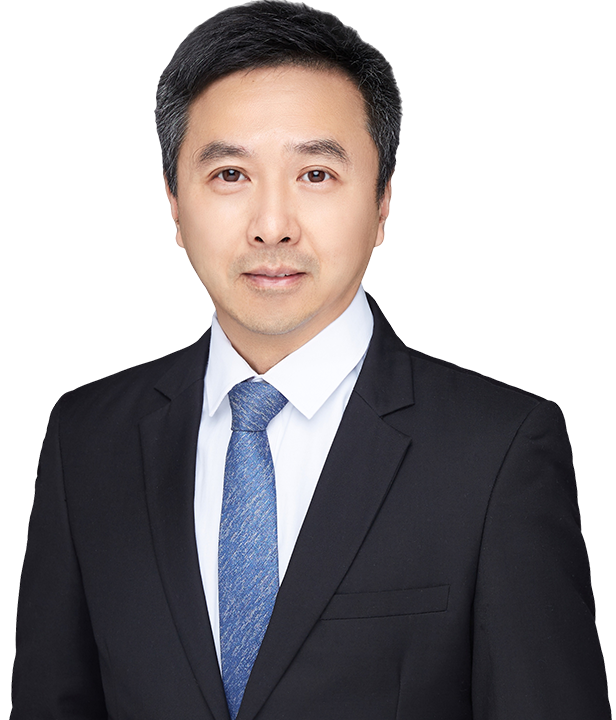©2024 Zhejiang Zhiben Law Firm. All rights reserved.Zhejiang
LABEL: Labor ,
On September 13, 2024, the State Council issued the "Measures for Gradual Delay of Statutory Retirement Age" (referred to as the "Measures"), which stipulate that the statutory retirement age will be gradually delayed by classification starting from 2025. Delaying the retirement age means raising the minimum age limit for receiving pensions, as well as expanding the number of eligible workers, which creates a certain tension between the declining employment rate. In this regard, Article 5 [1] of the Measures stipulates the promotion of high-quality and full employment, and for the first time at the national level, proposes to prevent and control "age discrimination in employment". In fact, the draft of the Employment Promotion Law of the People's Republic of China, released in 2007, proposed to stipulate that "workers shall not be discriminated against in employment based on factors such as ethnicity, race, gender, religious beliefs, age, physical disabilities, etc." and "employers shall not discriminate against workers based on factors such as ethnicity, race, gender, religious beliefs, age, physical disabilities, etc." However, the officially promulgated Employment Promotion Law of the People's Republic of China (referred to as the "Employment Promotion Law") deleted the factor of "age".On September 15, 2024, the "Opinions of the Central Committee of the Communist Party of China and the State Council on Implementing the Employment Priority Strategy to Promote High Quality and Full Employment" (referred to as the "Opinions") were subsequently released, which stipulated "guaranteeing equal employment rights... eliminating unreasonable restrictions and employment discrimination that affect equal employment based on geography, identity, gender, age, etc., and smoothing social mobility channels. Improving the relief mechanism for employment discrimination, legally incorporating it into the scope of labor security supervision, improving the civil support and prosecution mechanism, and steadily carrying out public interest litigation and prosecution work" and "studying and improving the relevant legal system for employment promotion and anti employment discrimination".
Based on the context and background of age discrimination in employment, this article mainly focuses on employment discrimination against workers aged 35 or 40 to before retirement age (referred to as "older workers"), including workers approaching retirement age (referred to as "older workers"), and does not involve workers who have reached retirement age (referred to as "overage workers"). Emotionally, the midlife crisis in the workplace has become a consensus or collective anxiety, and there is a growing call for legal means to combat age discrimination in employment; However, upon closer examination, age discrimination is fundamentally different from traditional types of discrimination such as race and gender, and the legal provisions on discrimination or employment discrimination in China are more principled. The approach to preventing and controlling age discrimination in employment is still unclear. The following text will briefly introduce and analyze the common definition of employment discrimination, debates related to age discrimination in employment, legislative and judicial practices in preventing and controlling age discrimination in employment in China, as well as prospects for the path of preventing and controlling age discrimination in employment in China, and provide practical suggestions for enterprises.
1、 What is' employment discrimination '?
Discrimination "in social psychology refers to the unjustified derogatory behavior towards specific groups and their members. In the field of employment, "legitimate reasons" generally include: 1) group characteristics have good predictive validity and reliability for labor productivity, and it is a rational and efficient information processing mechanism or strategy to treat workers differently, which can be referred to as "efficiency" considerations; 2) Differentiated treatment is aimed at achieving some recognized justice, which can be referred to as "fairness" considerations.
Legally, the 1958 Convention on the Elimination of Discrimination in Respect of Employment and Occupation (ILO C111), which China ratified in 2005, defines employment and occupation discrimination (referred to as "employment discrimination") as "any distinction, exclusion or preference based on race, skin color, sex, religion, political opinion, national or social origin, which has the effect of nullifying or impairing equality of opportunity or treatment in employment or occupation"; The exceptions that should not be considered discrimination include: 1) "differentiation, exclusion, or preference based on the inherent needs of any particular profession"; 2) The "special measures for protection or assistance" provided for in conventions or recommendations adopted by the International Labour Conference, or "other specialized measures tailored to the special needs of certain persons" (referred to as "special measures") determined by collective bargaining in the country, and age is listed as one of the reasons for the need for special measures. In other words, the employment discrimination that ILO C111 requires member states to eliminate domestically is the harmful differential treatment in the workplace based on legally protected characteristics (referred to as "protected characteristics"), unless there are justifiable reasons; Legitimate reasons include but are not limited to inherent professional needs and special measures, which can correspond to the aforementioned considerations of efficiency and fairness.
In China's domestic law, the Employment Promotion Law only stipulates that "workers shall not be discriminated against in employment on the basis of ethnicity, race, gender, religious beliefs, etc.", without a clear definition of discrimination or employment discrimination. At the judicial level, Guiding Case No. 185 issued by the Supreme People's Court in 2022 is a dispute over employment equality rights. The judgment of this case defines employment discrimination as "the unjustified differential treatment of workers by employers based on factors such as geography, gender, etc. that are not necessarily related to 'intrinsic job requirements' when recruiting personnel. Moreover, the dispute over employment equality rights falls under the category of personality rights disputes in terms of the cause of action. Correspondingly, the court generally believes that employment discrimination first infringes on personality rights or dignity, which is insulting. For example, if an employer only recruits personnel with a college degree for the job position, it objectively deprives applicants with a bachelor's degree of employment opportunities, but subjectively there is no such thing as insult or shame, so it should not be regarded as discriminating against applicants with a bachelor's degree.
Compared with ILO C111, the scope of employment discrimination in Chinese law is relatively narrow in some aspects: Chinese law only prohibits discrimination in the recruitment process and does not address equal opportunities or treatment in areas such as salary, promotion, training, and dismissal; In other aspects, it is biased: in China's judicial practice, in addition to the protected features listed by law, all features unrelated to the inherent requirements of work may become prohibited grounds for employment discrimination, and the court has greater discretion in this regard.
2、 Is there "age discrimination" in the field of employment?
According to the above definition, "age discrimination in employment" may be a questionable concept: is age based discrimination in the employment field unfair? The voices of doubt are as follows: 1) Age is not a fixed identity or group characteristic, but a constantly changing situation for each individual. There is no age based group or group, and individuals are treated equally or poorly at different age stages, achieving a vertical "balance of income and expenditure"; Generation after generation of people exist, and intergenerational differences are complex and historical; 2) In the workplace, older people tend to occupy higher positions, and derogatory discrimination is not the norm. 3) More importantly, age is a natural criterion for division of labor, and differentiation is based on efficiency considerations. In short, if there is no targeted group, no derogatory discrimination, and there are legitimate reasons, "discrimination" will be dissolved in place.
However, the situation is accelerating: 1) Our society has entered the era of "post metaphorical culture", which means that it has shifted from the elderly imparting experience to young people to the elderly learning from young people, and there is an increase in temporary flexible employment and new forms of employment. The derogatory differential treatment of older workers is a reality and increasingly common. 2) In the post industrial era, the average life expectancy has increased, health conditions have improved, the negative correlation between age and labor productivity has greatly weakened, and individual differences have become larger, which may significantly deviate from population statistical characteristics.
Of course, irrational age discrimination in employment can be left to the labor market to adjust on its own; In the long run, an aging society with fewer children and a shortage of human resources will also eliminate age discrimination. Whether legislation is needed to prohibit age discrimination in employment requires comprehensive consideration of more social factors and legislative effects, such as prohibiting age restrictions during recruitment or prohibiting the collection of age information until the end of the probationary period. Is this feasible and effective; Does the prohibition of layoffs directly or indirectly based on older age protect the strong and hinder the reemployment of the weak? Does it squeeze the employment or promotion opportunities of young people? What impact does it have on the career planning, expectations, and behavior patterns of various generations. In fact, countries have been relatively hesitant to introduce age specific anti discrimination legislation or special measures. It was not until the 1990s that Australia followed suit after the United States legislated in the 1960s, while the United Kingdom only legislated in 2006, and Japan legislated in 2007. Thus, the prohibition of age discrimination in employment has also been put on the legislative agenda in China.
3、 Legislation and judicial practice in preventing and controlling age discrimination in employment in China
As mentioned above, China's laws have not directly prohibited age discrimination in the field of employment before. In judicial practice, there were disputes over the retirement age discrimination of female cadres and the age discrimination of civil service applicants in 2005. Subsequently, there were many administrative lawsuits filed against the upper age limit of recruitment conditions for civil servants or personnel within public institutions, which were generally rejected by the court on the grounds that the recruitment conditions were not actionable administrative actions. In the private sector, the court may not support the claim of age discrimination in employment based on the principle of "freedom without prohibition by law". For example, in case (2021) Yue 03 Min Zhong 884, the cleaning service contract stipulated that the cleaning staff appointed by the contractor should not exceed 45 years old for women and 55 years old for men; The employer found that the contractor did not replace the "overage" cleaners in a timely manner and demanded that the contractor bear the liability for breach of contract. The contractor claimed that the relevant agreement was age discrimination in employment, illegal and invalid, but the court did not support it; For example, in the case of (2017) Yue 01 Min Zhong 16199 and 16200, the employer stipulated in its internal system that cadres must retire from management positions after reaching a certain age, and based on this, transferred workers. The first instance court believed that the relevant system discriminated against age and that job transfers were illegal, while the second instance court believed that restricting the age of employment belonged to the autonomy of the employer and made a revised judgment.
At the same time, there are also supporting cases, such as the (2016) Yue 0183 Min Chu 901 case, in which a transportation company required bus drivers to be between 18 and 45 years old in their recruitment information. The court held that the Ministry of Public Security had comprehensively considered the age conditions, physical conditions, driving skills, and other aspects of drivers and set the upper age limit for bus drivers to 60 years old. However, the defendant set an age standard higher than the department's regulations and unrelated to work ability, which exceeded the boundary of exercising labor autonomy in accordance with the law and harmed the equal employment rights of the 45 week to 60 year old group, including the plaintiff.
In addition to directly pursuing the infringement liability of age discrimination in employment, there are other effective measures to indirectly prevent and control age discrimination in employment, such as restrictions on the dismissal of elderly workers. According to Article 42 (5) of the Labor Contract Law of the People's Republic of China, for workers who have worked continuously in the unit for 15 years and are less than five years away from the statutory retirement age, employers shall not make no fault dismissal in accordance with Article 40 of the Law or economic layoffs in accordance with Article 41 of the Law.
4、 Prospects for the Prevention and Control of Age Discrimination in Employment in China and Suggestions for Enterprises
How to define employment discrimination and age discrimination in law? Considering foreign countries, it can be noted that age discrimination in employment is a rather complex and variable category. For example, mandatory retirement is seen as direct age discrimination in the United States, while in the United Kingdom, it is seen as a fair and dignified "new old alternation" mechanism that balances intergenerational interests, with justifiable reasons or fair considerations; Gradual delayed retirement and transitional arrangements such as "cutting off old and new" may also be seen as disguised age discrimination that undermines intergenerational fairness.
There are still many unknowns about how fast and how far China's legislation against age discrimination in employment will go. For example, in the areas where employment discrimination is prohibited, currently only targeting the recruitment process of enterprises, will it extend to various stages of employment such as salary and benefits, promotion and development, resignation and retirement, and even the public sector? 2) Is the identification criteria for employment discrimination based on the motivation of the employer or the feelings of the employee as a constituent element? How to allocate the burden of proof? Is indirect discrimination prohibited? 3) Is the legitimate reason for age discrimination in employment further defined or listed in law, or is it left to judicial discretion? How to define the boundary with the autonomy of enterprise employment? 4) Regarding the protected age groups, this article focuses on discrimination against older workers compared to younger workers. Of course, age discrimination also includes over age discrimination, specific age group discrimination (such as menopausal discrimination, childbearing age discrimination), and even reverse youth discrimination.
In addition, combined with Article 5 of the Measures and the Opinions, there is greater room for imagination in indirect prevention and control measures, such as: 1) rewarding enterprises for providing specialized or prioritized positions for hiring older workers. 2) Set indicators or quotas for the age composition and proportion of employees in enterprises, provide financial subsidies, reduce social insurance premiums or taxes, or collect employment security funds, etc; 3) Improve ESG or sustainable development reports and incentive mechanisms. By disclosing the age composition of employees, turnover rates, work-related injuries, and occupational health of each age group, companies can demonstrate their fulfillment of corporate social responsibility, diversity, and inclusiveness; 4) Provide more funding or convenience to individuals or businesses for older workers to receive training and education, such as financial subsidies, paid annual leave, or free training services.
For enterprises, it is recommended to prepare for compliance in the recruitment process while continuously monitoring the release of supporting documents: 1) Do not explicitly state in recruitment information or recruitment process that specific age groups of workers will not be recruited or given priority in recruitment; 2) Avoid forcing applicants to provide age information in the early stages of recruitment, and evaluate their qualifications based on their educational background and work experience; 3) Review and update recruitment related documents, forms, and process guidelines, train internal personnel, and communicate and cooperate effectively with recruitment service agencies. In the long run, it can be foreseen that, including industries or enterprises where the current workforce is generally young, the average age of employees in various units will increase with the growth of the average age of the labor market. Therefore, it is also recommended that enterprises: 1) objectively treat the actual correlation between individual age and work ability of workers, and develop scientific and accurate methods for talent evaluation and assessment; 2) Based on the age composition and needs of employees, update the salary and benefits allocation and cost calculation in a timely manner, including salary and benefits projects and growth mechanisms linked to seniority, additional holidays, commercial insurance, and pension plans; 3) Based on the development stage of the enterprise and the career cycle of employees, actively adjust human resource planning, optimize division of labor and job settings, personnel allocation and promotion channel management, fully utilize and develop human resources, adapt to and embrace a more experienced talent team, profoundly changing labor market and social environment.





